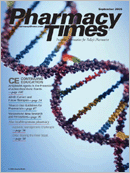Publication
Article
Pharmacy Times
Merck & Co's Gardasil
Author(s):
Human papillomavirus (HPV) is a sexually transmitted virus that infects skin epithelial cells and mucous membranes of the genital area. HPV is well-known for causing genital HPV, which infects about 6.2 million Americans each year.1 The common occurrence of genital HPV among Americans is a concern, because persistent infections can possibly lead to cervical or other genital cancers. Among American women, cervical cancer is the 11th most common type of cancer.1
Most people acquire HPV from their sexual partners. The greatest risk factors for women are age (20-24 years old), engaging in sexual intercourse at a young age, a number of lifetime and recent sex partners, the men's sexual history, and having an uncircumcised male partner. For males, the risk factors are age (25-29 years old), a greater number of lifetime and recent sex partners, and being uncircumcised.2
In June 2006, Merck received FDA approval for Gardasil (Quadrivalent Human Papillomavirus [Types 6, 11, 16, 18] Recombinant Vaccine), a vaccine for the prevention of cervical cancer, abnormal and precancerous cervical, vaginal, and vulvar lesions, and genital warts.3 Gardasil is a quadrivalent vaccine that is currently approved for girls and women who are between the ages of 9 and 26 years old. The vaccine is not yet approved for men, but its effectiveness and safety in this population are currently being studied.
The vaccine is effective against HPV types 6, 11, 16, and 18. HPV types 6 and 11 are the HPV types that cause ~90% of the cases of genital warts. Types 16 and 18 are responsible for causing ~70% of the cases of cervical cancers.4
Clinical Trials
The efficacy of Gardasil was evaluated in 4 randomized, double-blind, placebocontrolled clinical trials enrolling women aged 16 to 26 years.4 The participants were randomized to receive Gardasil or placebo. One of the phase 2 studies evaluated a single component of Gardasil, HPV type 16, which is known to cause cervical cancer. There was a reduction in the incidence of cervical cancer and HPVrelated infections.4,5
The other 3 studies (one phase 2 study and two phase 3 studies) evaluated all 4 components of the vaccine. A total of 20,591 women were enrolled in all 4 trials. Gardasil reduced the incidence of diseases caused by each of the 4 types of HPV.4
Safety
The most common side effects seen with this vaccine are pain, swelling, itching, redness at the site of injection, and fever.4 This vaccine is contraindicated in those who are allergic to the active substances or other ingredients in the vaccine.4
Administration
Gardasil is available in 0.5-mL singledose vials or prefilled syringes.4 The vaccine should be administered intramuscularly (in the deltoid region of the arm or the anterolateral region of the thigh) in 3 separate 0.5-mL injections over a 6- month period.4 The first dose is given on the preferred day, the second dose is given 2 months after the first dose, and the last dose is given 6 months after the first dose. The vaccine should be shaken well before use, and it should appear cloudy and white. Other routes of administration have not been studied.
Conclusion
The American Cancer Society, the American College of Obstetricians and Gynecologists, and the United States Preventive Services Task Force provide guidelines for cancer screening based on age and the age at which sexual intercourse was initiated.3 All 3 guidelines agree that patients should be screened about 3 years after they begin having sexual intercourse or when they reach age 21, with regular screenings thereafter.2 The guidelines also recommend that women 30 years or older with 3 consecutive normal Pap smears should be tested every 2 to 3 years. Women with abnormal Pap smears should be tested more frequently.
A problem with this vaccine is that it does not protect against all types of HPV. In addition, it will not prevent infection caused by other sexually transmitted diseases, and it does not eliminate cervical cancer screening. Another problem is whether receiving the HPV vaccine will affect adolescent sexual behavior
Ms. Domenici and Dr. Patel are both pharmacists at Brigham and Women's Hospital, Boston, Mass. Ms. Wong is a sixth-year PharmD candidate from Massachusetts College of Pharmacy currently on clinical clerkship in the Investigational Drug Service at Brigham and Women's Hospital.
For a list of references, send a stamped, self-addressed envelope to: References Department, Attn. A. Rybovic, Pharmacy Times, Ascend Media Healthcare, 103 College Road East, Princeton, NJ 08540; or send an email request to: [email protected]

Newsletter
Stay informed on drug updates, treatment guidelines, and pharmacy practice trends—subscribe to Pharmacy Times for weekly clinical insights.






